Magpul—TMAG 20 AR/M4 GEN M3
According to the company, Magpul’s original 30-round TMAG 30 (translucent polymer magazine) changes…
According to the company, Magpul’s original 30-round TMAG 30 (translucent polymer magazine) changes…
According to TOPS, when the original El Chete was released in 2017 it…
Peeking into someone else’s everyday carry (EDC) setup is like getting a backstage…
The V Exercise was created for those who would like a continuous moving-and-shooting exercise that…
The tripod is the essential tool to allow the precise delivery of fire from any…
The skill of firing accurate rounds into a threat from retention is an underappreciated and…
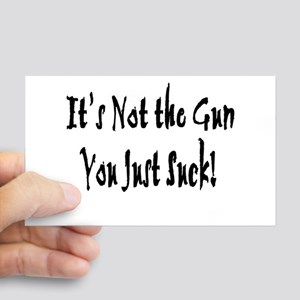
I recently heard about a class offered in Michigan called “You Suck, It’s Not the Gun.” While the class name may not be the most PC, it makes a valid point. I currently teach a concealed carry class for the state of North Carolina, and one of the things I do for my class is to give my students feedback while on the range qualifying. We do not shoot the qualification until after everyone has gone through the basic pistol portion of my class. For the class, I provide two .22 LR pistols to use along with the ammo. Now I’ve shot and still shoot these guns quite a bit and can tell you they are very reliable. However, out of a small class of say five inevitably at least one person has feed or eject issues with one of these guns. The funny thing is I have never personally had a problem with either gun, and I run the same ammo I use in my class. If the gun and ammo are the same, the only other aspect of shooting then has to be the shooter.

It’s not a favorite subject amongst experienced shooters, because it puts the blame squarely on them. Still, it’s a fact. More often than shooters would like to admit the error comes from them. I’ve worked in the firearms industry for 12 years and have had to handle customer service complaints about firearms of every action type. I’ve seen it happen more times than I can count. Someone complains that a gun they bought doesn’t work. Usually, it’s a failure to feed or eject, but not limited to those issues. We take the gun to the range and cannot reproduce the problem. No matter what we try. The customer gets irate because he or she has been shooting their entire lives and they don’t accept the gun is not at fault. Don’t get me wrong; guns can and will malfunction from time to time, and everyone (no matter how professional) has an off day. It happens. I can tell you first hand; however, the shooter is the number one cause of problems.
The culprit is usually a shooter taking shortcuts to gain speed. They ingrain these shortcuts into their muscle memory creating bad habits they don’t realize they’re doing. Complacency is the other major cause of these errors. Shooters get too comfortable and ultimately lazy, cutting steps out of their shooting routine. An outside observer will be extremely helpful in diagnosing your problems. No matter how evolved or observant you may be, you still have biased eyes and won’t see everything. The best thing you can do is to have an observer identify the issue, go back to basics and slow down to improve your skills. Let’s go through the five pistol basics and what problems they may cause. My hope is if you have developed an issue this article will guide you to the correct fix.
Your grip on your gun is first. It is how you control the reaction, get on target, and commence your firing sequence. There is a reason why companies, like Glock, will go through multiple generations of grip design and everyone seems to argue what’s the best. First off, the gun has to fit you. If you cannot execute the proper grip on your weapon because it is too big or too small, you will never be able to control your gun confidently. Your grip should be balanced, strong and most importantly comfortable. Get a high grip with the web of your hand as high onto the backstrap as comfortably possible with your dominant hand. The closer to the center line of action you can get, the better balanced your grip and shot will be. Your support hand should wrap around the dominant hand matching knuckle to knuckle. Your two palm swells should meet around the back of the gun. In doing so, your two hands will engulf the grip giving full support. Both thumbs should also run along the same side of the pistol in a comfortable spot (take care that neither thumb rests against the slide stop, this will cause the gun to lock open during firing by inadvertently pushing up on the slide stop). Don’t choke your pistol. Holding the gun with your dominant hand so hard that your hand shakes, will have you struggling to stay on target. Choking the gun affects grouping on your target keeping you from getting that tight group you work for. Firm but comfortable is critical. The opposite of this is a weak grip causing the wrist to break. The most common function error that is produced from this is called stove piping. It is when the ejected brass is caught by the rim between the slide and back of the next round. It will look like a stove pipe sticking out of the ejection port of the pistol, hence the name. I’ve witnessed this with big men and little women alike on my .22’s. Which means it’s not the recoil of the gun but rather the shooter. If your wrist breaks, you are either not holding the gun high enough or adequately. I’ve seen this problem more with people who cup the bottom of their grip or grasp their wrist with their nondominant hand. This also causes you to hit the targets high. By having a firm two-handed grip high up on the pistol, the recoil becomes controllable, and the wrist stays in line with the action so that too much force isn’t put onto the joint.


Another issue that can happen with grip is pushing down in anticipation of recoil. It is common for shooters to attempt to reduce muzzle rise by pushing the gun down at the last moment. The muzzle is going to rise. Go ahead and learn that. It is supposed to. Let the gun’s trigger break and muzzle rise. If you follow all the basic steps, you will able to control the amount of rise and be back on target for your follow up quickly. Those who try to fight the gun inevitably get frustrated and start complaining that new sights are needed. Pushing your shot means your hits on target land near the bottom. Just relax and let the gun do its thing. Align your sights as you should and let the break surprise you. Trust in the weapon, and you will hit the target. Moderation is your goal. Not too tight and not too loose with the grip. You hit low with a large group; your grip is too tight. You hit high and with a large group; your grip is too soft.
This brings us to aiming. This is one of the two most essential factors in shooting. After all, if the gun is not aimed correctly at the target, it will not hit the mark. There are two aspects of aiming, sight alignment and sight picture. Sight alignment is how you proper line the front and rear sights. There are a lot of options, both factory, and aftermarket, for pistol sights. Different colors, heights, dots, and cuts to pistol sights allow the shooter to customize what works best for them. They are all meant to produce the same result; aligning the front and rear sight properly to make your shots accurate. Proper sight alignment places the front sight post evenly between the two halves of the rear sight and top of the front sight post level with the top of the rear sight post. Most factory sights have three dots, one on the front sight and two on the rear. This means you merely line all three dots up putting the front sight dot equal distance between the two rear sight dots. As I said, there are different options in those dots (like a dot and a post, one dot on the front and one on the rear, etc.) they are meant to aid in aligning the front and rear sights properly and quickly. No matter which style of sights you prefer the end desire is the same. The front sight even with the rear in height and centered with the rear sight. This means your gun is pointing straight. Benchrest shooting is best with a new gun so that your primary focus will be on the sights. If you do have the sights properly aligned and your still not hitting the target you can adjust your sites accordingly. All of this should be done from the bench to ensure they are right on the gun before standing at the range.

The next aspect of aiming is the sight picture. Once you’ve got the sights aligned, you have to align them with the target. Most pistols shoot at what is called the center hold. Meaning you line up with the center of the target. This hold also means you won’t actually see the holes being punched into the target. This can become an issue for many shooters who look for immediate feedback of seeing where they hit on target to adjust accordingly. The problem is subconscious if you expect to see the target hit, you’ll move your head that last split second which breaks your focus. This will more often than not pull your shot off target a bit.
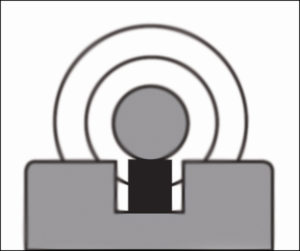
It may only be a few inches, which in the scheme of things isn’t bad, but if you’re trying to improve your accuracy and grouping, you will eventually be fighting yourself and never seeing the improvement. This is a mind over matter situation where you have to force yourself to trust your gun. If you find yourself not grouping as tight as you want practice focusing on the sight alignment with the target aligned with those sights in the background. A crazy fact about the human body is that the eyes can not focus on more than one thing at a time. With proper sight alignment and sight picture, the front sight needs to be the focus of your vision. You will still be able to see everything else, but it will be a bit out of focus. Squeeze the trigger so that you get a surprise break and, after a few shots, put the gun down and look at the target. You’ll be surprised at how much closer your groupings will be. Between the two aspects of aiming sight, alignment is more important than sight picture. Your sight alignment determines how straight you shoot and even a small shift in the front sight will produce a group that is several inches off target at a distance of only 10 yards. Keep the sights straight, and you’ll shoot straight.
Trigger control is the second most important aspect of shooting fundamentals. However, too many times trigger control is the leading cause of issues with shooting. Especially in competition shooters. Competitors want speed. They practice their speed to improve their score. By doing so, they rush the shot causing them to jerk the trigger in anticipation of the break. This will always cause shots to land to the right or left (depending on whether you are right or left handed) and probably a little low. Many combat pistols have a short reset for follow up shots. While this is an excellent aspect of a good trigger, shooters that rush their shots also anticipate the short reset and don’t follow through. Many shooting classes that focus on fundamentals (like the class mentioned in the beginning) concentrate on slowing down the shot process to get back to these basics. Speed is good, but if you aren’t doing every step, every time, you end up concreting bad habits. A trigger pull needs to be smooth and straight in the rearward direction. The break should be a surprise, each time, and then the release should be smooth and straight as it is let back out. Good habits are made by practice, and speed comes from the mastery of these habits in practice. Don’t sacrifice accuracy for speed and create shortcuts. In competition, as well as real life, accuracy wins over speed. I shoot IDPA now and have shot 3-Gun in the past. Now I’m not the best by any stretch, but I have learned a lot, improving over the years. The biggest lesson I’ve learned is that if I slow down a bit and focus on my sights and my trigger my scores are unquestionably better. If I try to speed up, I may shave a few seconds off my time, but I add more points for hits in the 2 and three rings than I saved on my time. We all want to be Jerry Miculek, but I’m sure he’ll tell you he practiced these same fundamentals and mastered them before gaining the speed he is so famous for. Don’t skip steps. Focus on your front sight, align your sights, and squeeze your trigger smoothly, each time you shoot. Of the five fundamentals of shooting, aiming and trigger control are the most important and are also the areas that usually need the most improvement.
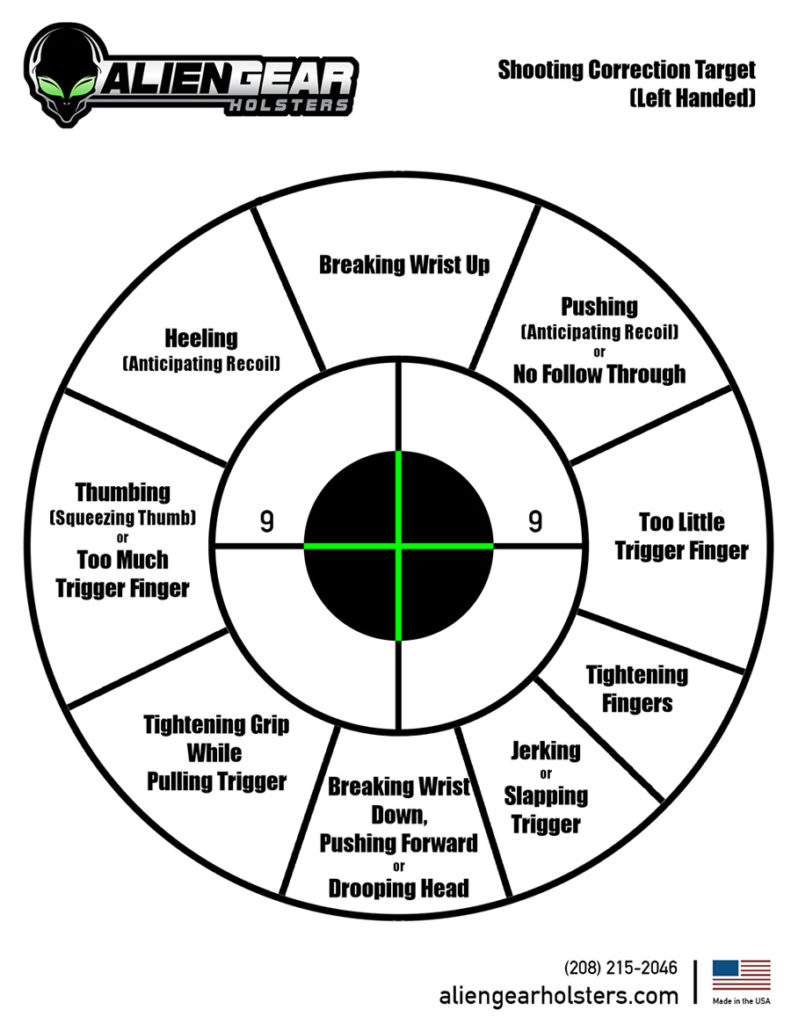
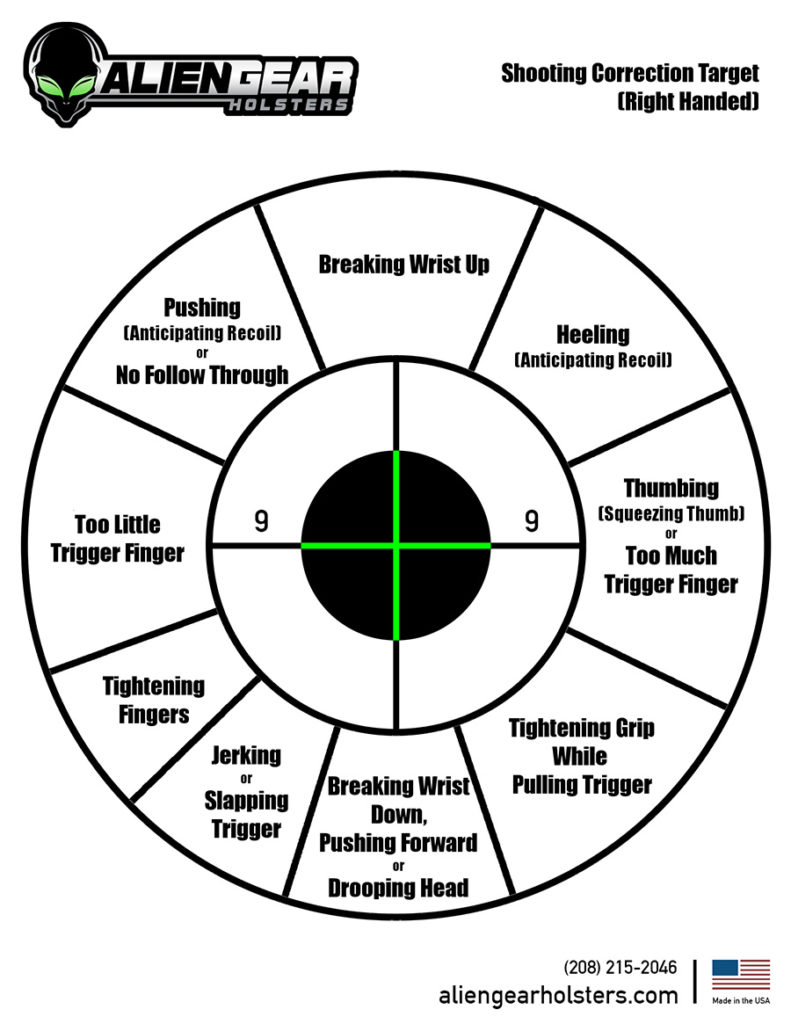
We as human beings need air to live. When we shoot, we need to breathe. I’ve had some students in the qualification portion of my class that started off shooting on target, and I’d watch as their groupings started to open up. For my one-on-one classes, I focus a lot on this aspect. Many times, when we shoot, we forget to breathe. Snipers and long-distance shooters have been taught this in detail, but somehow it gets missed with pistol shooting. I have told a number of my students to stop mid-mag, put on the safety, and take a breath.
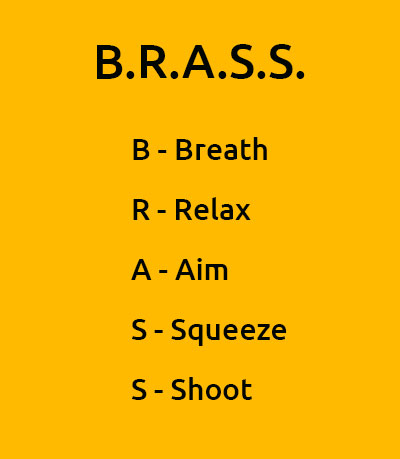
A grouping that might have been growing to 3″ or 4″ will close back down to 1″ or 2″ after they take that breath and calm down. Whether it’s excitement or anxiety, many shooters forget to breathe. Being relaxed is key to good shooting. If you, your stance or your heart rate is not comfortable, your shooting will show it. The NRA says while taking a shot to take a deep breath, then exhale enough to feel comfortable before squeezing the trigger. Now this works standing still on a range but what about competition or tactical training. We can’t call a time out to catch our breath. What do we do? This becomes a mental game at this stage. Many experienced shooters know the benefits of practicing at home with dry fire training, but it is not as common as it should be. It is a great practice exercise to help with these fundamentals. Add breath to this practice and mentally put yourself in a situation that creates that adrenalin rush. Your mind is a powerful thing, and you’ll be shocked at what you can fool your body into thinking. This gives you the opportunity to breathe and force yourself to calm down all while practicing those good habits you’ve already been practicing. While breath control may not cause a malfunction with your gun it will cause problems with accuracy. Holding your breath causes you to shake making it harder to get on and stay on target. In any sport, they tell you to practice and prepare mentally. Shooting sports is no different. Whether on the range or while dry fire training, mentally put yourself in the game so that you can learn to stay calm, focused, go through each step each time.
Any sport you participate in will preach the importance of follow through. You have to complete every step, every time. Don’t stop breathing. Don’t let go of your grip. Don’t quit aiming. Don’t jerk your trigger just because your gun went bang. “Hey, I made a good shot, guess I’m done and can just run on autopilot now, right?” That will never work if you are trying to be a good and more importantly consistent shooter. When the trigger breaks and the gun goes bang continue with your steps. Smoothly let go of the trigger, maintain proper sight alignment and picture, maintain a firm and controlled grip and lastly remember to breathe.
If you seem to have a problem with your gun when no one else does, then it’s going to be you, not the gun. If you have an issue of a random empty chamber or stove pipe after a shot, analyze your grip. If you are hitting low and either to the right or left then examine your trigger control (and purposely let the trigger break surprise you). If your shot placement seems like it’s grouping too big, focus on the front sight and sight alignment and remember to calm down and breath. There are targets out there that have problem areas listed rather than the bullseye ring. These are excellent diagnostic tools at the range to help show you areas of improvement. Alien Gear Holsters has free downloadable, printable targets that are great for a shooter to print off at home and use on the range.http://aliengearholsters.com/printable-shooting-targets Your gun could have an issue, your sights might need to be adjusted or replaced, but the higher likelihood is that you’ve missed a step somewhere. It never hurts to revisit your fundamentals to re-establish good habits. No matter how good a shooter you are, you can always find a place to improve. So, whether you seemed to be plagued with a gun that doesn’t seem to shoot right or whether you want to improve your performance, there is an answer in your fundamentals. Practice as much as you can, always practice the proper steps, and watch your shooting improve. Lastly, remember to have fun.
Looking for more articles from our Blog? Check them out here. Also, learn what 3 Questions To Ask When Choosing The Right Handgun
Jonathan has been in the firearms industry for 12 years. Most recently becoming an NRA Pistol Instructor and NC Concealed Carry Instructor. He also has competed in both 3 Gun and IDPA. Jonathan graduated from The Ohio State University with a Bachelor of Arts degree in Journalism.
Notch sets out to make one of the most worn pieces of headwear on the planet, the baseball cap, even better than it already was. Have you ever…
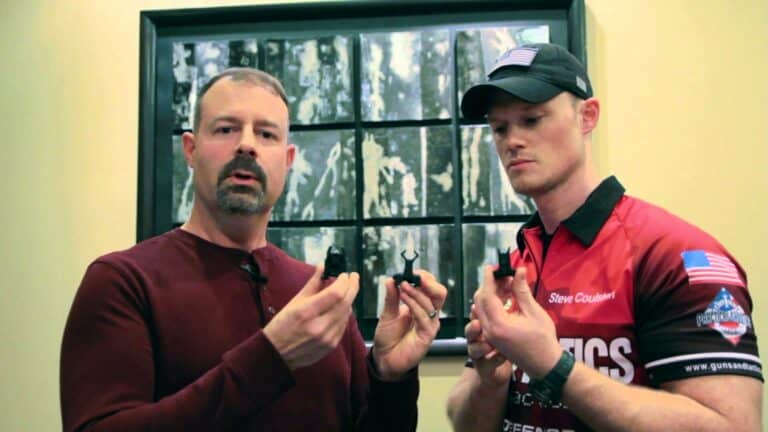
Blitzkrieg Components introduce the new Chevron Front Sight Post in this behind the scenes SHOT Show 2014 interview with Steve Coulston and Guns & Tactics Magazine.
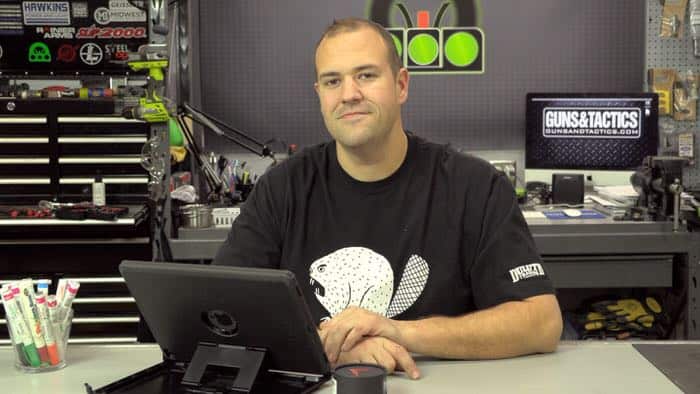
In this episode we answer 8 questions from showing your papers, hot guns, black boots, Vltor A5, loaded mags and more. As always if you’ve got a question,…
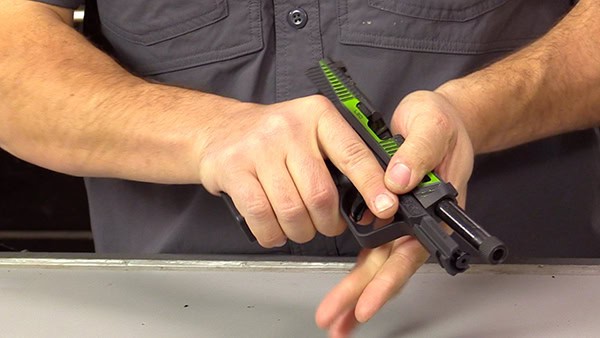
We go over function checks for your handgun. A function check is quick series of checks that can be done after service or a cleaning.
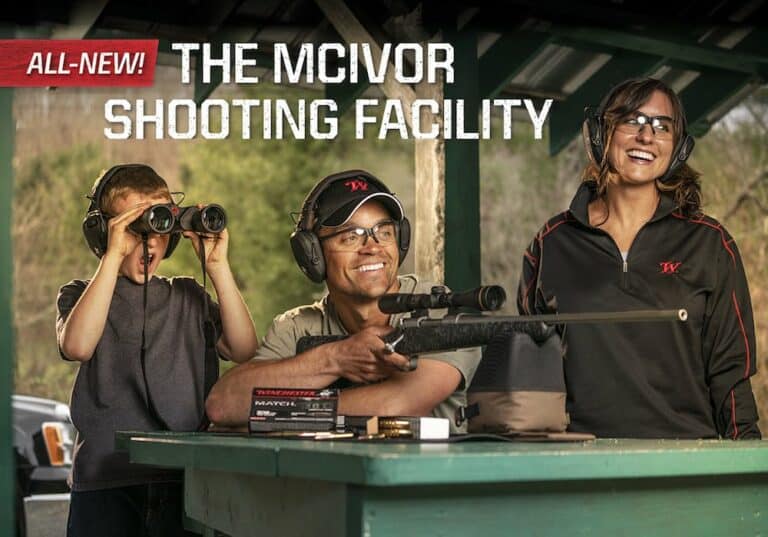
Winchester, Mississippi Department of Wildlife, Fisheries, and Parks, and Foundation Announce Grand Opening of New McIvor Shooting Facility EAST ALTON, Ill. (March 26, 2019)— After more than three years…
As much as I’d like to wish I could see in the dark like a velociraptor, I can’t. And as much as I’d like to wish that all…
Notch sets out to make one of the most worn pieces of headwear on the planet, the baseball cap, even better than it already was. Have you ever…

Blitzkrieg Components introduce the new Chevron Front Sight Post in this behind the scenes SHOT Show 2014 interview with Steve Coulston and Guns & Tactics Magazine.

In this episode we answer 8 questions from showing your papers, hot guns, black boots, Vltor A5, loaded mags and more. As always if you’ve got a question,…

We go over function checks for your handgun. A function check is quick series of checks that can be done after service or a cleaning.

Winchester, Mississippi Department of Wildlife, Fisheries, and Parks, and Foundation Announce Grand Opening of New McIvor Shooting Facility EAST ALTON, Ill. (March 26, 2019)— After more than three years…
As much as I’d like to wish I could see in the dark like a velociraptor, I can’t. And as much as I’d like to wish that all…
Notch sets out to make one of the most worn pieces of headwear on the planet, the baseball cap, even better than it already was. Have you ever…

Blitzkrieg Components introduce the new Chevron Front Sight Post in this behind the scenes SHOT Show 2014 interview with Steve Coulston and Guns & Tactics Magazine.
© 2025 UN12 Magazine
© 2025 UN12 Magazine
Wait! Don’t forget to